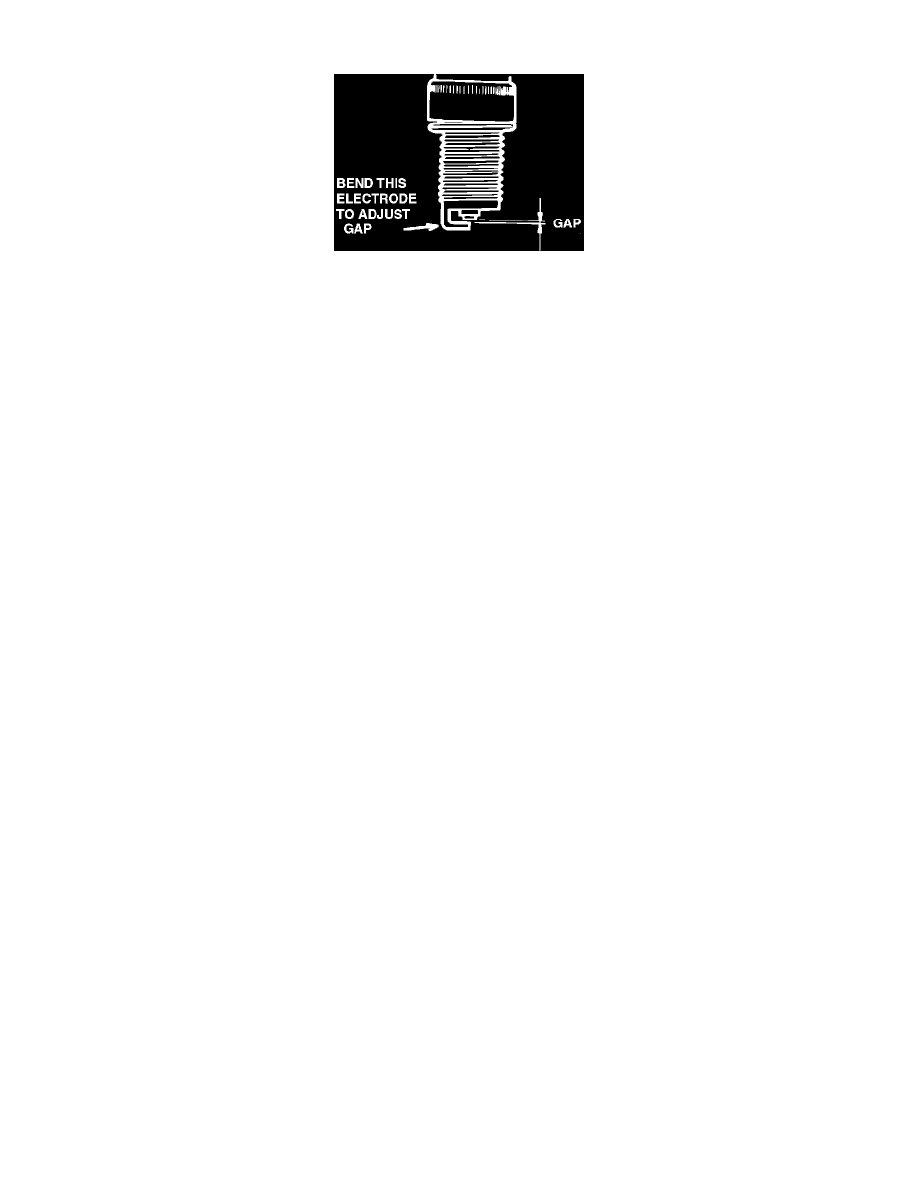Stealth R/T Turbo V6-2972cc 3.0L DOHC Turbo (1996)

Spark Plug: Adjustments
Spark Plug Gap
1. Pull the spark plug boot from the plug and slide it back along the cable. Disconnect spark plug cable from the spark plug. Do not pull on the
cable itself. If the spark plug cable is removed by pulling, it may be damaged.
2. Using a spark plug socket/wrench, remove all plugs from cylinder head.
CAUTION: Use care not to allow foreign matter to enter through plug holes.
3. Check the spark plugs for the following:
^
Broken insulator
^
Worn electrode
^
Carbon deposits
^
Damaged or broken gasket
^
Burnt condition of porcelain insulator at spark gap.
NOTE: Dark deposits indicate too rich a fuel mixture, light (white) deposits indicate too lean a fuel mixture, advanced ignition timing or
insufficient plug tightening
4. Check plug gap using a plug gap gauge and adjust, if necessary. The standard gap should be 1.0 - 1.1 mm (0.039 - 0.043 in.). Do not set wider
than the maximum allowable gap. The maximum gap is 1.3 mm (0.051 in.).
NOTE: Platinum-tipped spark plugs can be identified by blue lines on the ceramic. Do not reuse them by cleaning or regapping. If
platinum-tipped gap exceeds 1.3 mm (0.051 in.) replace spark plugs.
5. Tighten spark plug to 20-30 Nm (15-21 ft-lbs). Do not overtighten the spark plugs. The threaded portion of the cylinder head might be damaged if
the spark plug is overtorqued.
